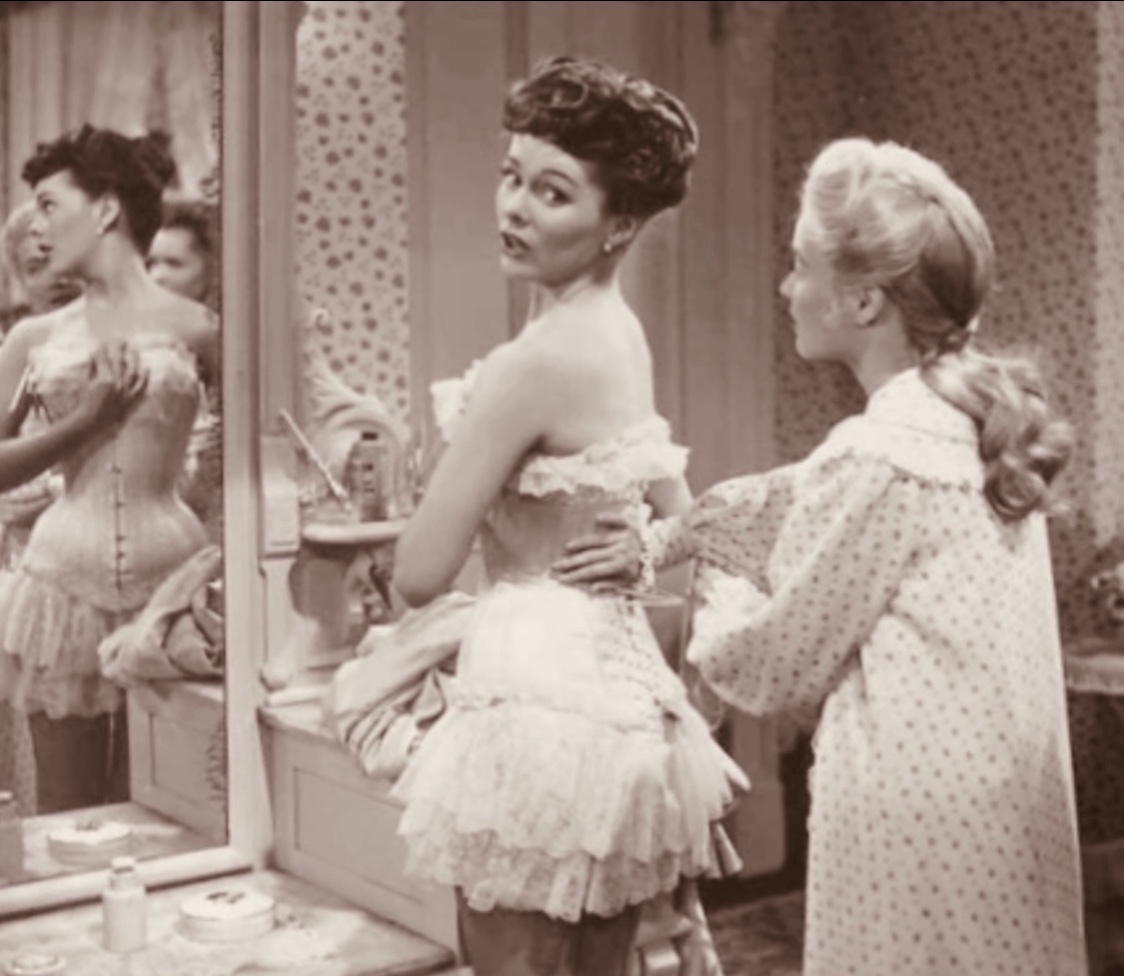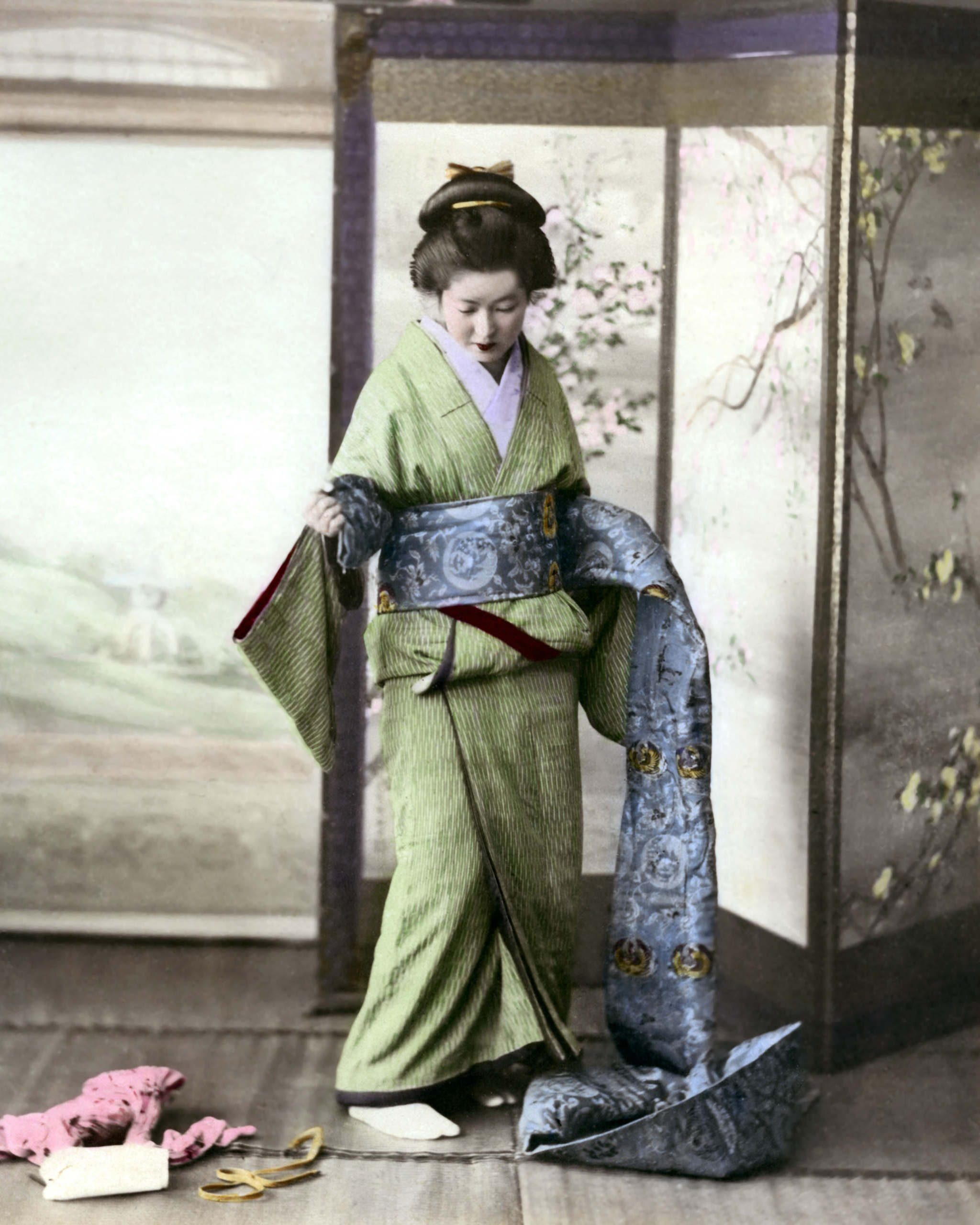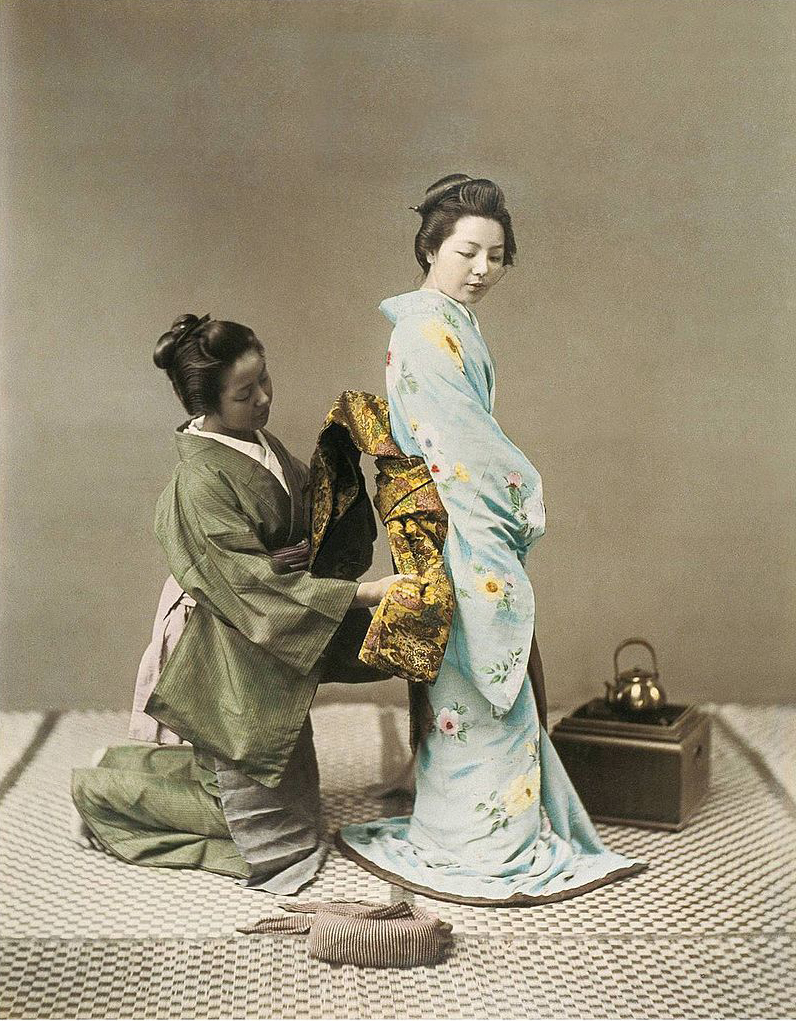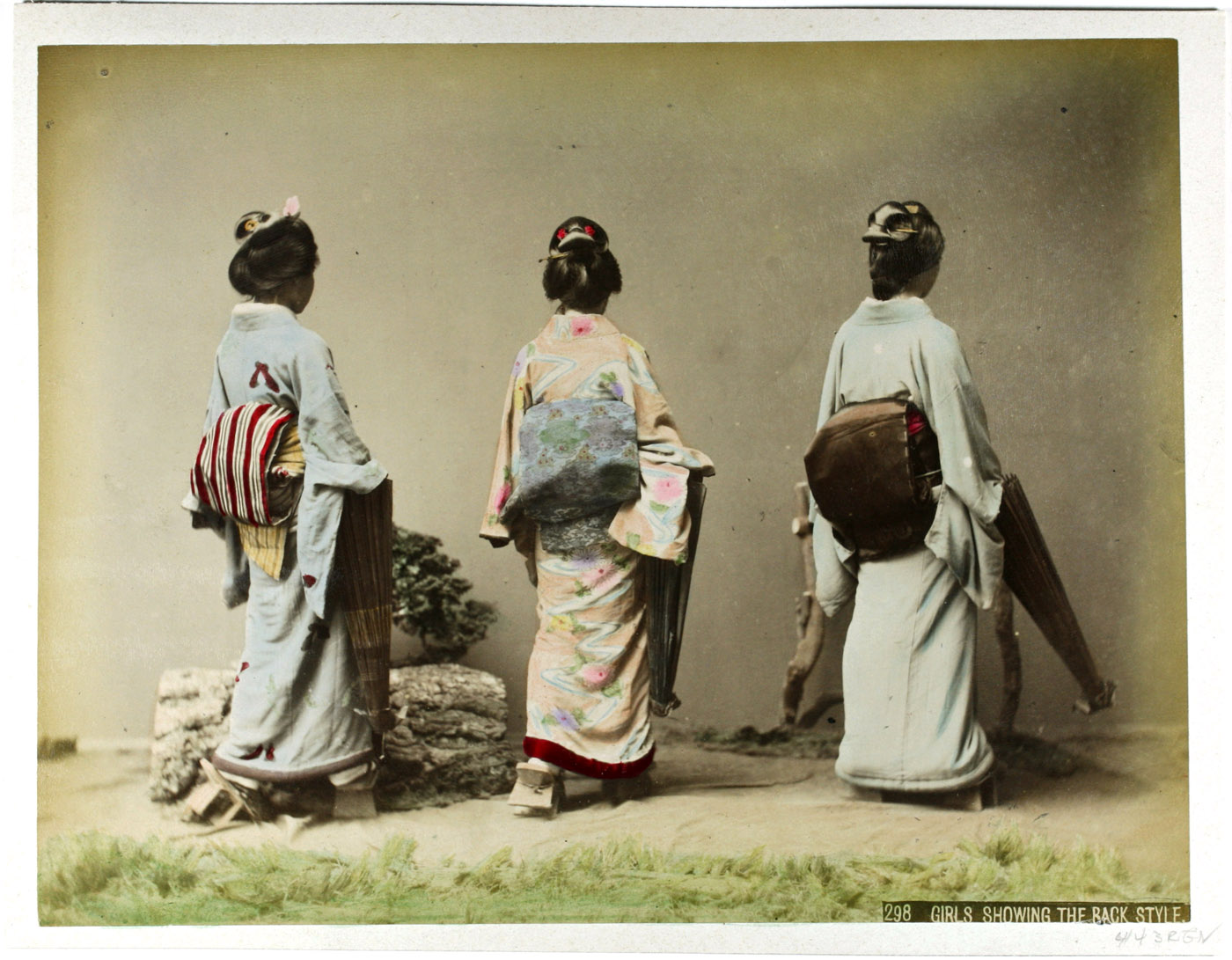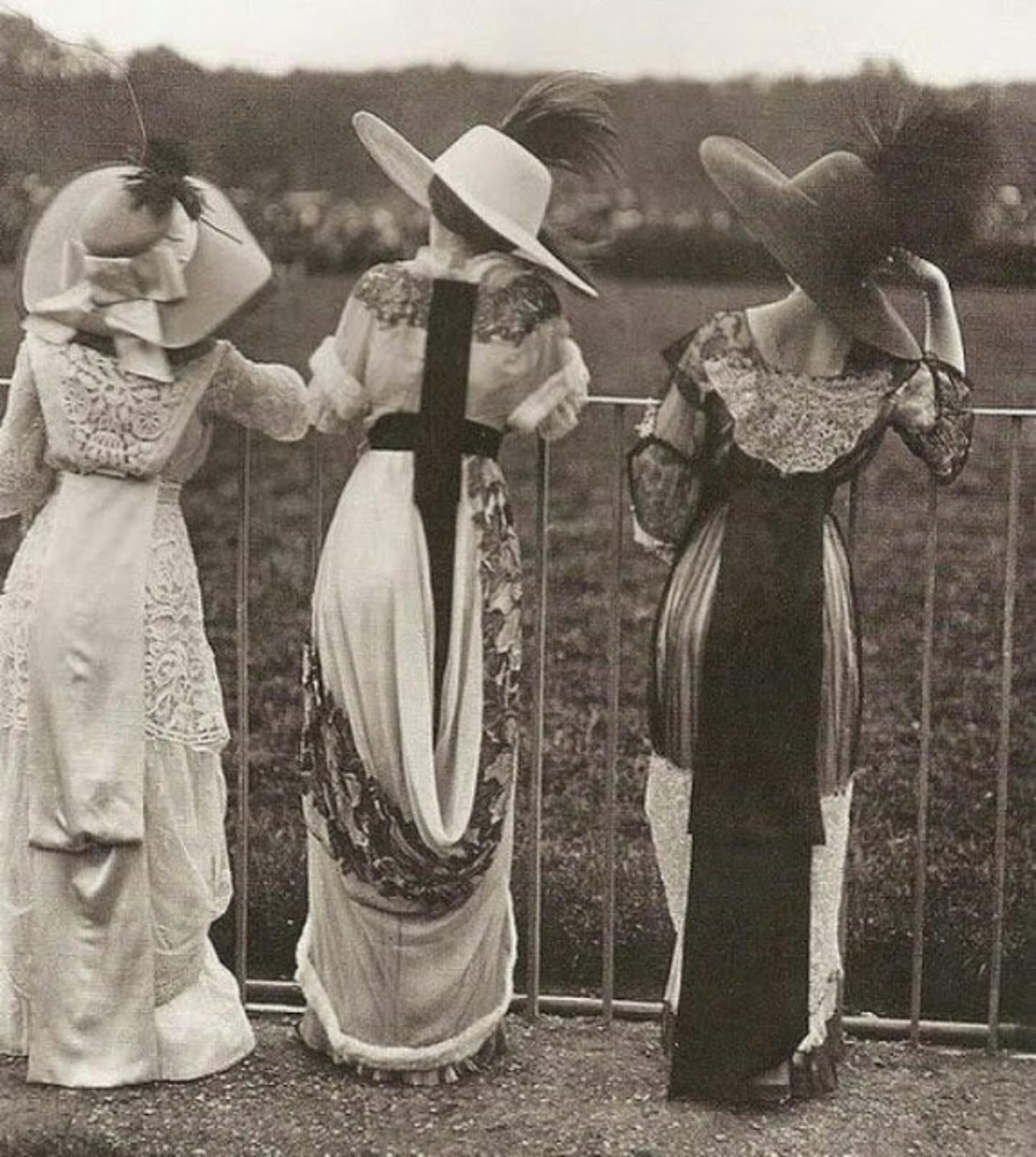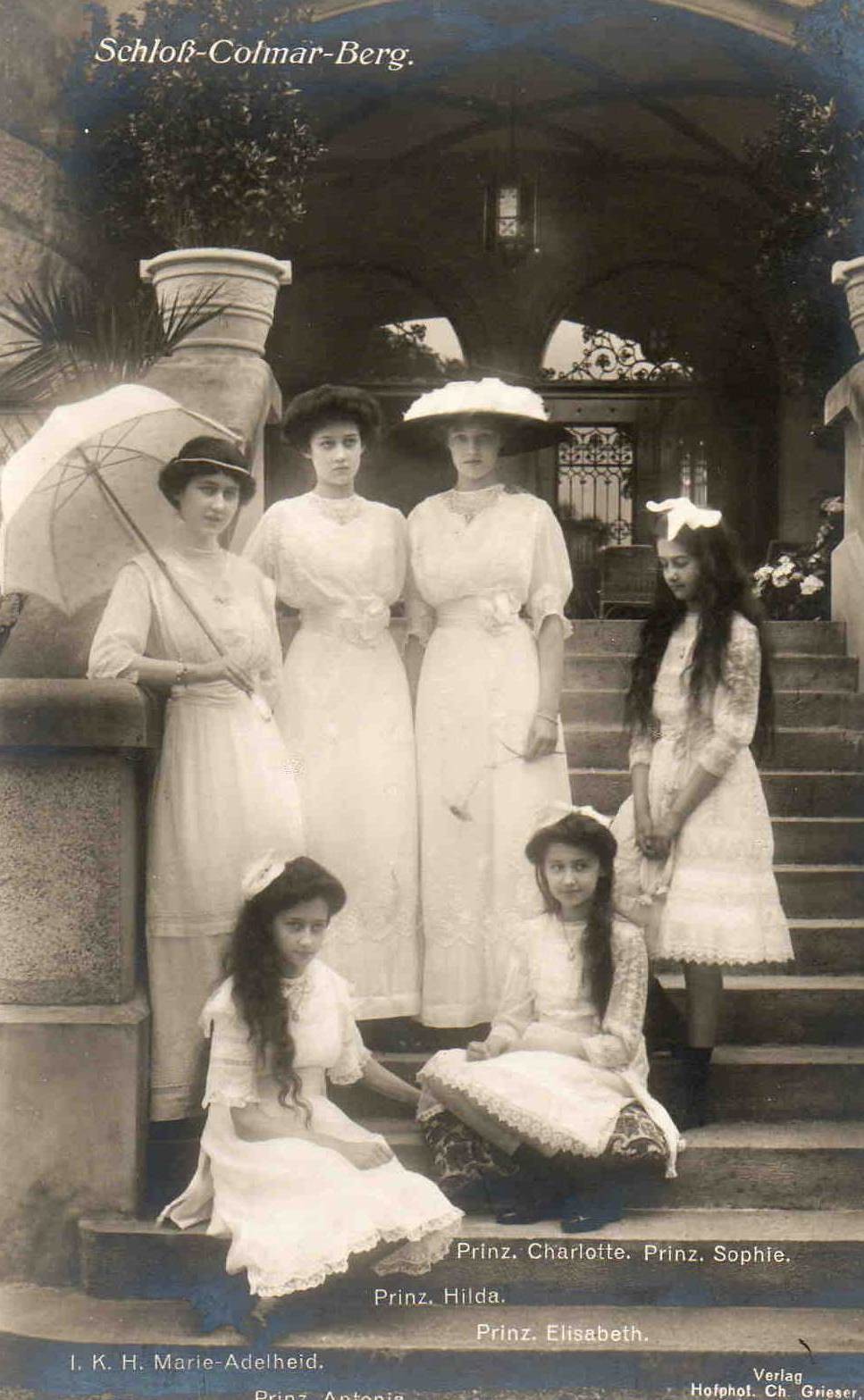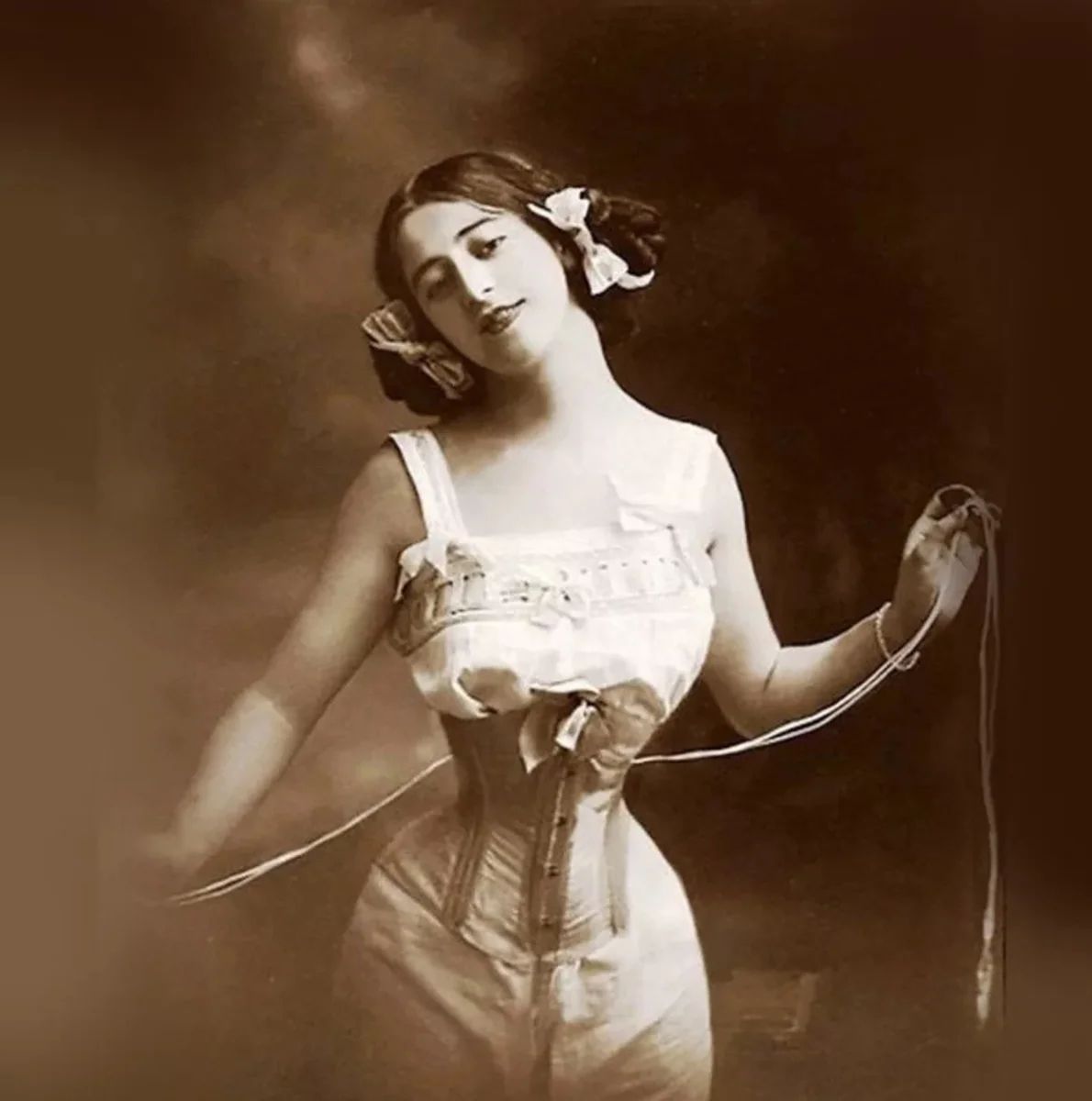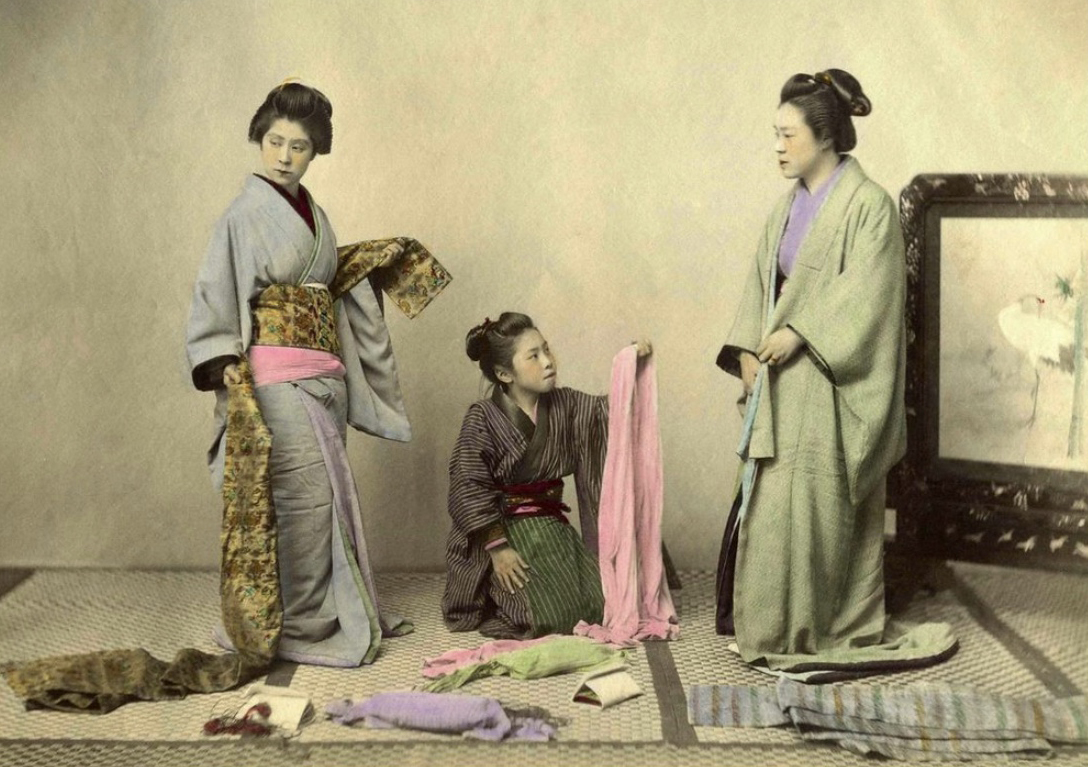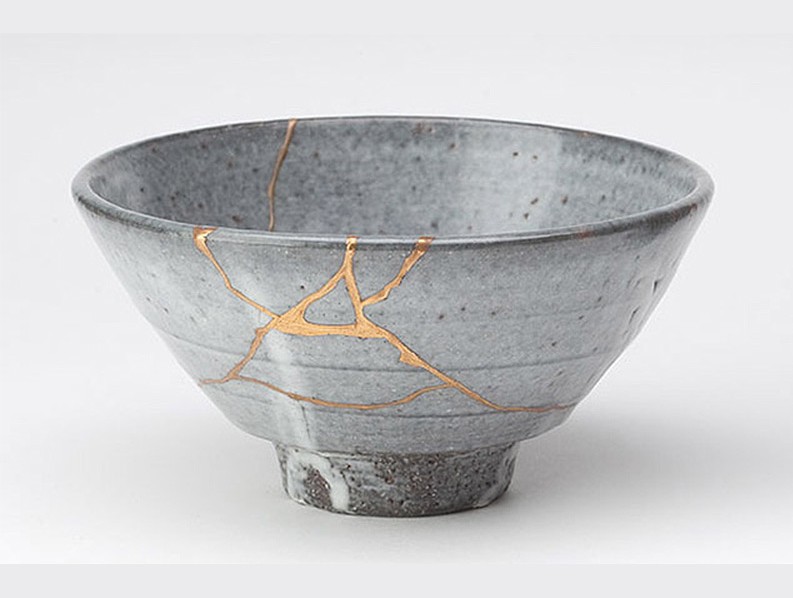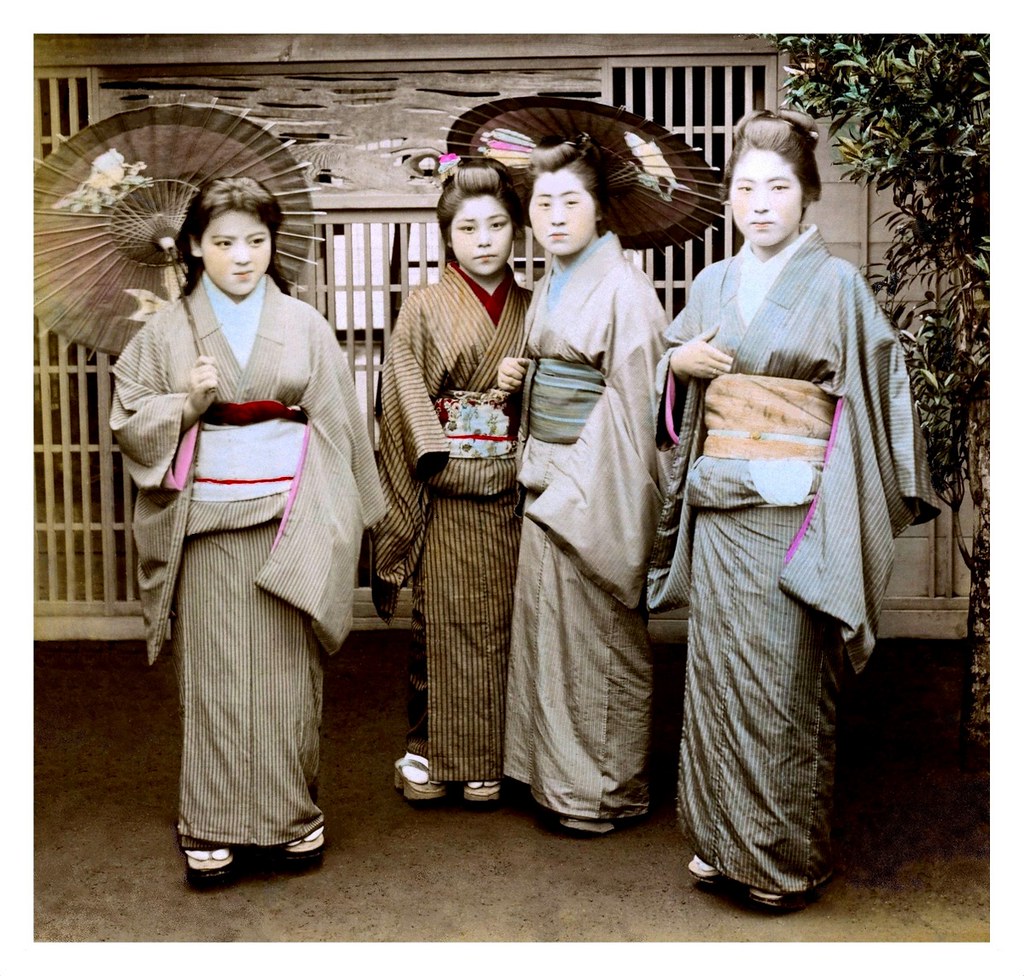/ˈkɔːsɪt/ noun noun: corset; plural noun: corsets • a woman’s tightly fitting under-garment extending from below the chest to the hips, worn to shape the figure. • a tightly fitting undergarment worn by men or women to support a weak or injured back. HISTORICAL• a tightly fitting laced or stiffened outer bodice. Origin Latin “corpus”- Old French “cors”- Middle English…
/ˈəʊbi/ noun noun: obi; plural noun: obis a broad sash worn round the waist of a Japanese kimono. Origin Old Japanese “𝗼𝐛𝐮” – Japanese “𝗼𝐛𝐢” Japanese: from Old Japanese, ‘to wear’. The only purpose was to keep the kimono wrapped in place and so to the obis were just braided cord to wear a kimono at the beginning. – Definitions…
In the past there were so many different ways of tying an Obi and you could shout to tie the knots at the front or at the back, there were no actual rules. However, tying the Obi at the back was gradually popular and tying it at the front was wearable by unmarried women. The place of the knot standardized…
The knot tied with the obi is known as the musubi (結び/, lit.”knot”). Though obi functioned to hold the kimono closed for many centuries, beginning in the Edo period, the obi became too wide and too stiff to function effectively in this manner. In the modern day, a number of ties and accessories are used to keep the kimono in…
The straight-front corset, also known as the swan-bill corset, the S-bend corset, or the health corset, was worn from circa 1900 to the early 1910s. Its name is derived from the very rigid, straight busk inserted in the center front of the corset. This corset forced the torso forward and made the hips jut out in the back. The straight-front…
In the late 1800s, corsets started to be considered a dangerous moral ‘evil’, promoting promiscuous and superficial views of female bodies. The obvious health risks, including damaged and rearranged internal organs as well as compromised fertility were blamed on excessive corsetry. While support for fashionable dress contested that corsets maintained an upright, “good figure” as a necessary physical structure for…
The corset as an undergarment had its origin in Italy and was introduced by Catherine de Medici into France in the 1500s, where the women of the French court embraced it. This type of corset was a tight, elongated bodice that was worn underneath the dress. The women of the French court saw this corset as “indispensable to the beauty…
An Obi is a richly decorative brocade woven fabric worn around the waist to close a Kimono. However, about 400 years ago, the Obi were just thin strings without any significant differences between man and woman. The width of the Obi became a little wider in the beginning of the Edo period (around 1600) and became as it is today…
In Japan, broken objects are often repaired with gold. The flaw is seen as a unique piece of the object’s history, which adds to its beauty. Kintsugi is the Japanese art of repairing broken pottery by using a precious metal liquid gold or liquid silver to bring together the pieces of a broken pottery item and at the same time…
Kimono (着物) and Kitsuke (着付け) Japanese traditional garb is more than just a method to cover one’s body, it is an art. From the informal to the elaborate formal Kimono, there are many different styles, fabrics, and uses for traditional Japanese clothing. Naturally, such beautiful clothing cannot simply be ‘worn’, rather, the wearing of the clothes itself is an art.…

